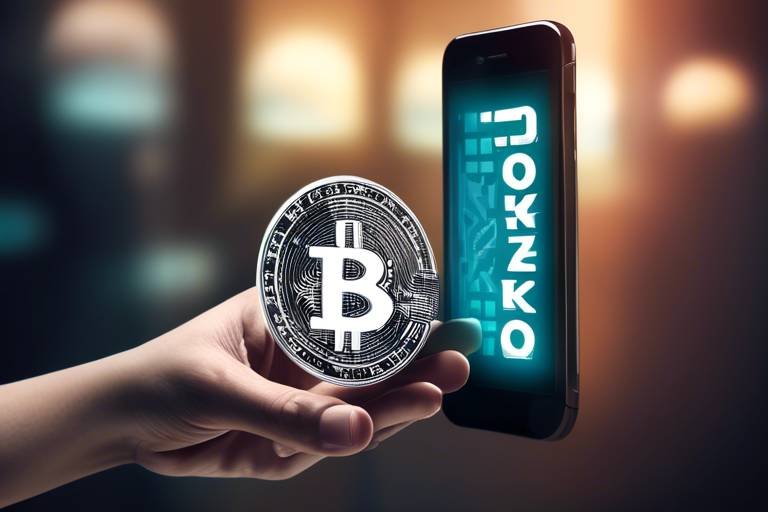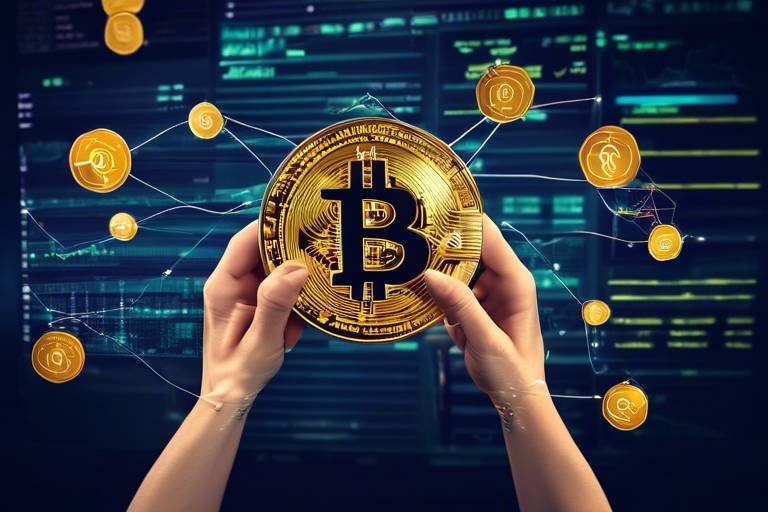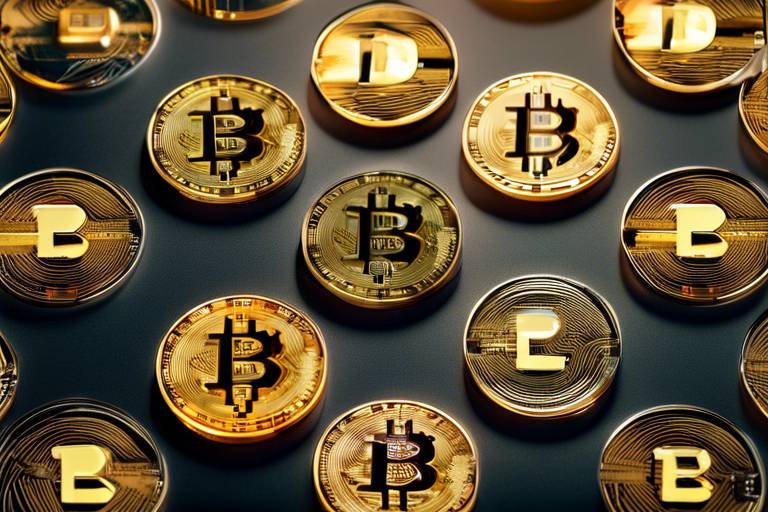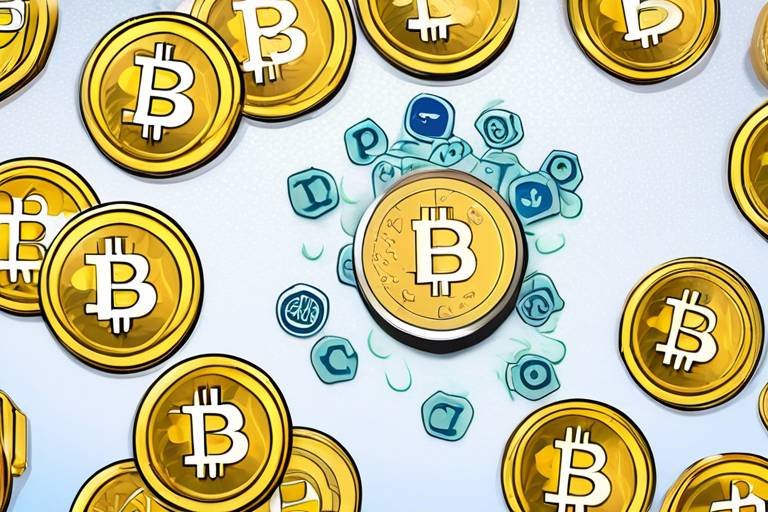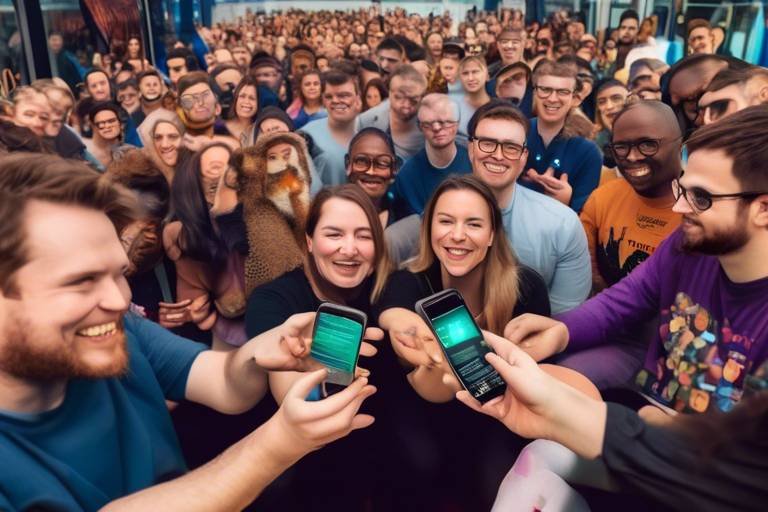The Future of Blockchain in Education
The world of education is on the brink of a revolutionary change, and at the center of this transformation is blockchain technology. Imagine a system where students no longer have to worry about the authenticity of their diplomas or the legitimacy of their academic achievements. Instead, they can confidently present their credentials, knowing that they are securely recorded on an immutable ledger. This article delves into the vast potential of blockchain in the education sector, highlighting how it can reshape the way we verify credentials, create decentralized learning platforms, and ultimately empower learners in ways we've never seen before.
One of the most exciting aspects of blockchain is its ability to enhance credential verification. Traditionally, the process of verifying educational qualifications has been cumbersome and fraught with challenges, often leading to delays and potential fraud. With blockchain, every degree, certificate, and credential can be securely stored and easily accessed, allowing employers and educational institutions to verify a candidate's qualifications in real-time. This not only saves time but also builds trust in the hiring process, as employers can be assured that the information presented is accurate and tamper-proof.
But the implications of blockchain extend far beyond just credential verification. The rise of decentralized learning platforms powered by blockchain technology opens up a world of possibilities for students. Imagine a platform where learners can choose from a diverse array of courses offered by institutions worldwide, all while maintaining control over their educational records. This flexibility fosters a more personalized learning experience, allowing students to tailor their education to fit their unique needs and career aspirations.
One of the most empowering features of blockchain in education is the ability for students to own their educational records. This ownership means that learners can curate their own learning journey, showcasing their achievements and skills to potential employers without the need for intermediaries. With the introduction of micro-credentials and digital badges, students can now highlight specific skills they have acquired, making it easier for employers to recognize their capabilities. These achievements are verifiable and easily shareable, providing a more comprehensive picture of a candidate's qualifications.
Furthermore, blockchain technology paves the way for the global recognition of qualifications. In a world where education is increasingly globalized, students often face barriers when trying to have their qualifications recognized in different countries. Blockchain can help break down these barriers by providing a universal platform for credential verification, enabling students to pursue opportunities across borders without the hassle of re-evaluating their educational achievements.
Educational institutions themselves stand to gain significantly from the adoption of blockchain technology. By streamlining administrative processes and enhancing data security, institutions can reduce costs and improve efficiency in managing student records. The potential for reduced administrative burdens means that educators can focus more on what truly matters: teaching and supporting their students.
However, the journey toward integrating blockchain in education is not without its challenges. Several obstacles must be addressed before this technology can be widely adopted. Technical complexities, regulatory concerns, and the need for institutional buy-in are just a few of the hurdles that lie ahead. Educational institutions may find themselves grappling with the technical barriers associated with integrating blockchain into their existing systems, as this requires significant expertise and infrastructure.
Additionally, the lack of clear policies and regulations surrounding blockchain in education creates an atmosphere of uncertainty. Institutions may hesitate to embrace this innovative technology without a solid framework to guide their efforts. As the education sector navigates this evolving landscape, it will be crucial to establish guidelines that foster collaboration and innovation while ensuring the protection of students' rights and data.
In conclusion, the future of blockchain in education is bright, filled with potential for transformation. By enhancing credential verification, creating decentralized learning platforms, and empowering learners, blockchain could redefine the educational experience for students and institutions alike. As we look ahead, it will be essential to address the challenges that accompany this technological shift, ensuring that the benefits of blockchain are realized across the globe.
- What is blockchain technology? Blockchain is a decentralized digital ledger that securely records transactions and data across multiple computers.
- How does blockchain enhance credential verification? It allows for secure, tamper-proof storage of educational credentials, making verification fast and reliable.
- What are micro-credentials? Micro-credentials are short, focused qualifications that demonstrate a learner's specific skills or achievements.
- Can blockchain help with global recognition of qualifications? Yes, it provides a universal platform for verifying educational qualifications, facilitating recognition across borders.
- What challenges does blockchain face in education? Key challenges include technical complexities, regulatory issues, and the need for institutional acceptance.

Enhancing Credential Verification
Blockchain technology offers a revolutionary approach to credential verification in the education sector. Imagine a world where verifying a degree or certification is as simple as scanning a QR code. With blockchain, this is not just a dream; it’s becoming a reality. By creating a decentralized and immutable ledger, educational institutions can securely store and share student credentials. This significantly reduces the risk of fraud, which has long plagued the verification process.
One of the standout features of blockchain is its ability to provide a transparent and tamper-proof record of achievements. Each time a student earns a degree, completes a course, or receives a certification, that information is securely recorded on the blockchain. This means that employers and other institutions can easily verify the authenticity of a candidate's credentials without relying on potentially unreliable third parties. In fact, a study conducted by the World Economic Forum highlighted that up to 30% of job applicants lie about their qualifications. Blockchain can help eliminate this issue, providing peace of mind to employers.
Furthermore, the speed at which credentials can be verified is greatly enhanced. Traditional methods often involve lengthy processes of contacting institutions and waiting for responses, which can take days or even weeks. With blockchain, verification can occur in real-time, allowing employers to make quicker hiring decisions. This not only benefits employers but also enhances the candidate's experience, making the job search process less stressful and more efficient.
To illustrate the impact of blockchain on credential verification, consider the following
| Traditional Verification Process | Blockchain Verification Process |
|---|---|
| Time-consuming | Instantaneous |
| Prone to fraud | Secure and tamper-proof |
| Involves multiple parties | Decentralized, direct access |
| High administrative costs | Reduced costs |
In addition to these benefits, blockchain technology also facilitates the issuance of micro-credentials and digital badges. These are smaller, focused achievements that can be easily shared and verified. For instance, a student who completes a coding bootcamp can receive a digital badge that signifies their specific skills. This not only enhances their resume but also provides employers with a clear understanding of the candidate's capabilities.
As we look towards the future, it’s clear that blockchain has the potential to transform credential verification in education. By providing a secure, efficient, and transparent way to verify qualifications, it can significantly enhance the hiring process for employers while empowering students to take control of their educational journeys. The possibilities are endless, and as more institutions begin to adopt this technology, we can expect to see a major shift in how we view and verify educational credentials.
- What is blockchain technology?
Blockchain is a decentralized digital ledger that records transactions across many computers in a way that the registered transactions cannot be altered retroactively. - How does blockchain enhance credential verification?
It provides a secure and tamper-proof method of storing and sharing educational credentials, reducing fraud and speeding up the verification process. - What are micro-credentials?
Micro-credentials are smaller, focused achievements that can be earned and displayed digitally, showcasing specific skills or competencies.

Decentralized Learning Platforms
Imagine a world where your education is not confined to the four walls of a classroom, where learning is as flexible as your lifestyle. powered by blockchain technology are paving the way for this exciting reality. These platforms break down traditional barriers, offering students access to a wider range of courses and resources, regardless of their geographical location. This means that whether you're in a bustling city or a remote village, you can tap into a wealth of knowledge and skills that were previously out of reach.
One of the most significant advantages of decentralized learning is the personalization it offers. Instead of a one-size-fits-all curriculum, students can choose courses that align with their interests and career goals. This flexibility allows learners to create a unique educational journey that suits their individual needs. For instance, a student interested in data science can select from a variety of specialized courses, while another passionate about art can explore creative subjects without being held back by rigid institutional structures.
Moreover, decentralized platforms foster a sense of community among learners. Students from all over the world can connect, collaborate, and share insights, creating a rich tapestry of diverse perspectives. This collaborative approach not only enhances the learning experience but also prepares students for the global workforce, where teamwork and adaptability are crucial. Imagine participating in a project with peers from different continents, exchanging ideas and cultural insights that enrich your understanding of the subject matter.
Additionally, blockchain technology ensures that the credentials earned through these platforms are secure and verifiable. This means that when you complete a course or earn a micro-credential, it is permanently recorded on the blockchain, making it easy to share with potential employers. This transparency and reliability can significantly boost your employability, as employers can trust the qualifications you present. No more worrying about whether your hard-earned achievements will be recognized – with blockchain, your accomplishments are just a click away.
In summary, decentralized learning platforms represent a revolutionary shift in education. They empower students to take control of their learning journeys, provide access to diverse resources, and facilitate collaboration across borders. With the added security of blockchain technology, students can confidently showcase their skills and achievements, making education not just a phase of life but a lifelong journey. As we look to the future, it’s clear that these platforms will play a pivotal role in shaping the landscape of education.

Empowering Learners
Imagine a world where you, as a student, hold the keys to your educational journey. Blockchain technology is paving the way for this revolutionary shift by granting learners unprecedented ownership of their educational records. Gone are the days when your achievements were locked away in a university's database, accessible only to a select few. With blockchain, you can securely store your credentials and share them with potential employers at the click of a button.
This newfound control means that you can curate your own narrative. Instead of relying solely on a traditional diploma, you can showcase a rich tapestry of your skills and accomplishments. For instance, if you’ve completed a series of online courses, earned micro-credentials, or participated in workshops, all of these can be recorded on the blockchain. This is more than just a digital portfolio; it’s a verifiable record that speaks volumes about your capabilities.
Consider the impact of this empowerment on your job search. When applying for positions, you can present a comprehensive view of your skills, backed by verifiable data. Employers no longer need to sift through piles of resumes; they can view your achievements in real-time, ensuring they get a clear picture of what you bring to the table. This transparency not only builds trust but also enhances your chances of landing that dream job.
Furthermore, the ability to share your credentials easily can open doors to global opportunities. Imagine applying for a position in another country and having your qualifications recognized instantly, without the hassle of lengthy verification processes. Blockchain eliminates these barriers, fostering a truly global workforce.
To illustrate the various ways blockchain empowers learners, here’s a quick overview:
- Ownership: Students have complete control over their educational records.
- Verification: Achievements are easily verifiable by employers and institutions.
- Flexibility: Learners can curate their own educational narrative.
- Global Reach: Qualifications can be recognized worldwide, enhancing mobility.
In essence, blockchain is not just a buzzword; it’s a tool for empowerment. It encourages you to take charge of your learning journey, allowing you to showcase your unique skills and experiences in a way that resonates with employers. As we move forward, it’s clear that the educational landscape is evolving, and with it, the role of learners is becoming more prominent. This shift towards learner empowerment will not only enhance individual career prospects but also contribute to a more skilled and adaptable workforce in the future.
Q1: How does blockchain ensure the security of my educational records?
A1: Blockchain uses advanced cryptographic techniques to secure data, ensuring that your educational records are tamper-proof and accessible only to you and those you choose to share them with.
Q2: Can I use blockchain for my existing qualifications?
A2: Yes! Many institutions are beginning to adopt blockchain technology for existing qualifications, allowing you to transfer your records onto a blockchain platform.
Q3: What are micro-credentials, and how do they work?
A3: Micro-credentials are short, focused qualifications that demonstrate specific skills or competencies. They can be issued on a blockchain, making them easily shareable and verifiable.
Q4: Will employers accept blockchain-verified credentials?
A4: As blockchain technology gains traction, more employers are recognizing and accepting blockchain-verified credentials as legitimate proof of skills and qualifications.

Micro-Credentials and Badges
In today's fast-paced world, traditional degrees are just one piece of the puzzle when it comes to showcasing your skills and qualifications. Enter micro-credentials and digital badges, two innovative concepts that are revolutionizing how we recognize learning achievements. These digital certifications, which can be verified through blockchain technology, offer a way for learners to highlight their specific skills and competencies in a tangible and credible manner. Imagine walking into a job interview and not just presenting a degree but also a portfolio of badges that demonstrate your expertise in various areas. This is the power of micro-credentials!
Micro-credentials are essentially bite-sized learning experiences that focus on particular skills or knowledge areas. They can be earned through various means, such as online courses, workshops, or even informal learning experiences. Unlike traditional degrees, which often take years to complete and cover broad topics, micro-credentials allow learners to focus on what they truly need or want to learn, making education much more personalized and flexible. This is particularly beneficial in industries that are constantly evolving, where new skills are required on a regular basis.
Digital badges serve as a visual representation of these micro-credentials. They are not just pretty icons; each badge contains metadata that provides detailed information about the skills acquired, the issuing organization, and the criteria for earning it. This level of transparency ensures that employers can trust the validity of the credentials. For instance, a badge for "Data Analysis" might indicate that the learner has completed a specific course, submitted a project, and passed an assessment. This is much more credible than a simple statement on a resume.
The integration of blockchain technology in issuing these micro-credentials and badges adds an extra layer of security and trust. With blockchain, once a badge is awarded, it cannot be altered or forged, ensuring that employers receive accurate information about a candidate's qualifications. This is a game-changer in the job market, where the authenticity of credentials is often questioned. Imagine a world where employers can instantly verify a candidate's skills without the hassle of contacting educational institutions!
Moreover, micro-credentials and badges can foster a culture of continuous learning. They encourage individuals to pursue lifelong learning opportunities and skill development, as each badge earned can lead to new career opportunities. Educational institutions and organizations can also benefit by offering these credentials as part of their programs, making their offerings more attractive to potential students.
In summary, micro-credentials and digital badges represent a shift towards a more skill-based approach to education. They empower learners to take charge of their educational journeys, allowing them to showcase their achievements in a way that is both credible and easily shareable. As the job market continues to evolve, these innovative tools will likely become essential for anyone looking to stand out in their field.
- What are micro-credentials? Micro-credentials are short, focused learning experiences that validate specific skills or knowledge areas.
- How do digital badges work? Digital badges are visual representations of micro-credentials that include metadata about the skills acquired and the criteria for earning them.
- Can employers verify micro-credentials? Yes, using blockchain technology, employers can easily verify the authenticity of micro-credentials and badges.
- Why are micro-credentials important? They provide a more personalized and flexible approach to education, allowing learners to showcase specific skills relevant to their careers.

Global Recognition of Qualifications
In an increasingly interconnected world, the global recognition of educational qualifications has become more critical than ever. Imagine a scenario where a student from Brazil can seamlessly apply for a job in Canada, showcasing their credentials without the cumbersome process of verification. This dream is becoming a reality, thanks to blockchain technology. By leveraging a decentralized ledger, educational institutions can issue qualifications that are not only secure but also recognized across borders.
One of the most significant advantages of using blockchain for qualifications is that it eliminates the traditional barriers that often hinder international mobility. Students can have their degrees, diplomas, and certificates stored on a blockchain, making them easily accessible and verifiable by potential employers or educational institutions worldwide. This system not only enhances the credibility of qualifications but also fosters a sense of trust among employers, who can confidently assess a candidate's educational background.
Moreover, the global recognition of qualifications through blockchain opens up a plethora of opportunities for students. They can explore job markets in different countries, apply for international scholarships, or even participate in exchange programs with ease. This accessibility is crucial in today's competitive job landscape, where employers are increasingly looking for diverse skill sets and international experience.
To illustrate the impact of blockchain on global qualification recognition, consider the following table:
| Country | Blockchain Adoption in Education | Impact on Qualification Recognition |
|---|---|---|
| United States | Increasingly integrating blockchain for transcript verification | Enhanced trust in academic credentials |
| United Kingdom | Implementing blockchain for degree verification | Streamlined process for international employers |
| Australia | Pioneering micro-credentialing on blockchain | Global recognition of specific skill sets |
As we look towards the future, the implications of blockchain in education are profound. With the ability to create a universal standard for qualifications, students can confidently pursue opportunities across the globe. This shift not only benefits learners but also enriches the educational landscape by fostering a more inclusive and diverse environment.
In conclusion, the global recognition of qualifications through blockchain technology is not just a trend; it’s a transformative movement that is reshaping how we perceive and validate education. As more institutions embrace this innovative approach, the dream of a truly interconnected educational framework will come closer to reality, paving the way for a more equitable global workforce.
- What is blockchain technology?
Blockchain technology is a decentralized digital ledger that securely records transactions across multiple computers, ensuring transparency and security.
- How does blockchain enhance credential verification?
It allows for secure, tamper-proof storage of educational credentials, making them easily verifiable by employers and institutions.
- Can blockchain help with international job applications?
Yes, it facilitates the global recognition of qualifications, allowing students to present their credentials seamlessly across borders.
- What challenges does blockchain face in education?
Technical complexities, regulatory concerns, and the need for institutional buy-in are some of the challenges that need to be addressed.

Institutional Benefits
As we delve into the world of blockchain technology, it's essential to recognize the profound impact it can have on educational institutions. Imagine a scenario where administrative tasks are streamlined, costs are reduced, and data security is significantly enhanced. Sounds like a dream, right? Well, with blockchain, this dream can become a reality. Educational institutions stand to gain immensely from the adoption of blockchain technology, and here's how:
First and foremost, administrative efficiency is a game changer. With traditional systems, managing student records can be a cumbersome process filled with paperwork and potential errors. Blockchain allows for a decentralized and immutable ledger where all student data is securely stored. This means that institutions can access, update, and verify records in real-time, drastically reducing the time spent on administrative tasks. Think of it as replacing a dusty filing cabinet with a sleek, digital database that’s always up to date.
Moreover, the cost-effectiveness of blockchain cannot be overlooked. By minimizing the need for intermediaries in credential verification, institutions can save on costs associated with administrative overhead. For example, instead of paying for third-party verification services, universities can utilize blockchain to verify credentials directly. This not only cuts costs but also accelerates the verification process, allowing institutions to focus on what truly matters: delivering quality education.
Another significant advantage is the enhanced data security that blockchain provides. Educational institutions handle vast amounts of sensitive information, from student grades to personal identification details. With traditional databases, the risk of data breaches is ever-present. However, blockchain employs advanced cryptographic techniques that make it nearly impossible for unauthorized parties to alter or access data. This level of security ensures that student information remains confidential and protected, fostering trust between institutions and their stakeholders.
Additionally, blockchain technology can facilitate better collaboration between institutions. By creating a shared, transparent ledger, educational organizations can work together more efficiently. For instance, when students transfer between institutions, their records can be easily accessed and verified, eliminating the tedious process of record requests and ensuring a seamless transition. This collaboration can also extend to sharing resources and best practices, ultimately enhancing the educational landscape as a whole.
To encapsulate, the institutional benefits of blockchain in education are vast and transformative. By embracing this technology, educational institutions can:
- Increase administrative efficiency
- Reduce operational costs
- Enhance data security
- Facilitate collaboration between institutions
In essence, blockchain not only promises to revolutionize the way institutions manage records but also paves the way for a more secure and efficient educational environment. As we look to the future, the potential of blockchain in education is not just a possibility; it’s an impending reality that institutions would be wise to embrace.
- What is blockchain technology? Blockchain is a decentralized digital ledger that records transactions across many computers in a way that the registered data cannot be altered retroactively.
- How can blockchain improve credential verification? By providing a secure and immutable record of educational achievements, blockchain can streamline the verification process, reducing instances of fraud.
- What are micro-credentials? Micro-credentials are short, focused qualifications that demonstrate specific skills or competencies, often issued and verified through blockchain technology.
- Are there challenges to implementing blockchain in education? Yes, challenges include technical barriers, regulatory concerns, and the need for institutional buy-in.

Challenges to Implementation
While the potential of blockchain in education is undeniably exciting, it's crucial to acknowledge the challenges that stand in the way of its widespread adoption. First and foremost, many educational institutions face significant technical barriers when attempting to integrate this innovative technology into their existing systems. The complexity of blockchain technology requires a level of technical expertise that not all institutions possess. This can lead to a frustrating situation where schools and universities want to adopt blockchain but simply lack the necessary skills or infrastructure to do so.
Moreover, the integration process can be both time-consuming and costly. Institutions must invest in new systems, train staff, and sometimes even overhaul their entire data management processes. This brings us to another critical point: the financial implications. For many schools, especially smaller ones, the budget constraints can be a significant hurdle. They might find themselves torn between the desire to innovate and the reality of limited resources.
Additionally, the lack of clear policies and regulations surrounding blockchain technology in education can create a cloud of uncertainty. Without a solid regulatory framework, institutions may hesitate to invest in blockchain solutions, fearing potential legal repercussions or compliance issues. This uncertainty can stifle innovation and prevent institutions from fully realizing the benefits that blockchain can offer.
Another challenge that cannot be overlooked is the need for institutional buy-in. For blockchain technology to be successfully implemented, it requires a commitment from all stakeholders, including faculty, administrators, and even students. Change can be daunting, and many people may be resistant to adopting new technologies, especially if they do not fully understand how blockchain works or its potential benefits.
In summary, while the challenges to implementing blockchain in education are substantial, they are not insurmountable. By addressing these hurdles with a strategic approach, educational institutions can pave the way for a future where blockchain technology enhances learning and credentialing processes. However, it will take collaboration, investment, and a willingness to embrace change to overcome these obstacles.
- What is blockchain technology?
Blockchain is a decentralized digital ledger that securely records transactions across multiple computers. It ensures that the data cannot be altered retroactively, providing transparency and security.
- How can blockchain enhance education?
Blockchain can improve credential verification, create decentralized learning platforms, and empower learners by giving them ownership of their educational records.
- What are the main challenges of implementing blockchain in education?
The main challenges include technical barriers, financial implications, lack of clear policies, and the need for institutional buy-in.
- Is blockchain technology cost-effective for educational institutions?
While the initial investment can be high, the long-term benefits, such as reduced fraud and administrative costs, may offset these expenses.

Technical Barriers
When we talk about the integration of blockchain technology into the education sector, we can't ignore the that come with it. Imagine trying to fit a square peg into a round hole; that's what many educational institutions face when they attempt to incorporate blockchain into their existing systems. The reality is that the implementation of blockchain requires a level of technical expertise that may not be readily available in every institution. Many schools and universities are still grappling with outdated systems, and the thought of overhauling their infrastructure can be daunting.
Furthermore, the technical complexities associated with blockchain can create a steep learning curve. Institutions must not only understand how blockchain works but also how to effectively integrate it into their current operations. This involves not just software upgrades but also training staff and faculty to navigate this new landscape. The cost of hiring experts or consultants to guide them through this process can be prohibitive for many.
To put this into perspective, consider the following challenges:
- Infrastructure Overhaul: Many institutions may need to invest in new hardware and software to support blockchain technology.
- Data Migration: Transferring existing records to a blockchain system can be a complex and time-consuming process.
- Interoperability: Ensuring that new blockchain systems can communicate with existing databases and platforms is crucial yet challenging.
Moreover, the lack of standardized protocols across different blockchain platforms adds another layer of complexity. Institutions may find themselves locked into a specific technology or vendor, limiting their flexibility and adaptability. This can lead to a situation where the benefits of blockchain are overshadowed by the difficulties of implementation.
In addition to these technical challenges, there is also the issue of security. While blockchain is often touted for its enhanced security features, the actual implementation may expose institutions to new vulnerabilities if not done correctly. Institutions must ensure they have the right cybersecurity measures in place to protect sensitive student data during and after the transition to blockchain.
In conclusion, while the potential of blockchain in education is immense, the technical barriers to its adoption cannot be overlooked. Institutions must carefully consider their readiness for such a transformation and take proactive steps to address these challenges. Only then can they unlock the full benefits of blockchain technology for their students and themselves.
- What are the main technical barriers to adopting blockchain in education?
The main barriers include the need for infrastructure overhauls, data migration challenges, interoperability issues, and ensuring robust cybersecurity measures.
- Is blockchain technology difficult to understand?
Yes, it can be complex, requiring specialized knowledge to implement effectively within existing educational systems.
- How can institutions prepare for blockchain integration?
Institutions can start by assessing their current infrastructure, investing in staff training, and consulting with blockchain experts.

Policy and Regulation Issues
The integration of blockchain technology into the education sector is an exciting prospect, but it doesn't come without its share of policy and regulation challenges. Institutions are often left in a quandary, unsure of how to navigate the murky waters of legal compliance when it comes to implementing this innovative technology. The absence of clear guidelines can create a significant barrier to adoption. Imagine trying to build a house without knowing the zoning laws—it's not only frustrating but can lead to serious repercussions.
One of the primary issues is the lack of standardized regulations across different regions. Education systems vary widely from one country to another, and without a unified framework, institutions might hesitate to invest in blockchain solutions. For instance, if a university in the United States wants to collaborate with a college in Europe, they may face legal hurdles if their blockchain implementations don't align with local regulations. This inconsistency can stifle innovation and limit the technology's potential impact.
Moreover, data privacy laws present another layer of complexity. With blockchain's inherent transparency, there is a fine line between sharing valuable information and violating student privacy. Institutions must ensure that they comply with regulations such as the General Data Protection Regulation (GDPR) in Europe. This can lead to a scenario where institutions are hesitant to fully embrace blockchain, fearing potential legal consequences. The challenge lies in balancing the benefits of transparency with the need for confidentiality.
Additionally, the rapidly evolving nature of blockchain technology means that regulations often lag behind. As new applications and methods emerge, policymakers struggle to keep up. This creates a reactive rather than proactive regulatory environment, which can hinder institutions from confidently adopting blockchain solutions. To illustrate this point, consider how long it took for governments to regulate the rise of the internet. We are still witnessing the ripple effects of those initial regulatory decisions today.
To address these regulatory challenges, collaboration between educational institutions, policymakers, and blockchain experts is essential. By working together, they can create a framework that not only promotes innovation but also safeguards the interests of all stakeholders involved. This collaborative approach could lead to the development of best practices and guidelines that facilitate the responsible use of blockchain in education.
In conclusion, while the potential of blockchain in education is immense, the must be addressed to unlock its full potential. By establishing clear guidelines and fostering collaboration among various stakeholders, we can pave the way for a more secure and innovative educational landscape.
- What is blockchain technology? Blockchain is a decentralized digital ledger that records transactions across many computers securely and transparently.
- How can blockchain enhance education? Blockchain can improve credential verification, create decentralized learning platforms, and empower students by giving them ownership of their educational records.
- What are the challenges of implementing blockchain in education? Major challenges include technical barriers, policy and regulation issues, and the need for institutional buy-in.
- Why is regulatory clarity important for blockchain adoption? Clear regulations help institutions navigate legal requirements, ensuring compliance and fostering confidence in adopting new technologies.
Frequently Asked Questions
- What is blockchain technology in education?
Blockchain technology in education refers to the use of decentralized digital ledgers to securely store and verify educational credentials, achievements, and learning records. This innovative approach enhances transparency, reduces fraud, and empowers students by giving them control over their own educational data.
- How does blockchain enhance credential verification?
Blockchain enhances credential verification by providing a secure and immutable record of qualifications. Employers and institutions can easily verify a candidate's educational background without the risk of tampering or fraud, streamlining the hiring process and ensuring that credentials are genuine.
- What are decentralized learning platforms?
Decentralized learning platforms are educational systems built on blockchain technology that allow students to access a wide range of courses and resources. These platforms foster personalized learning experiences, enabling students to tailor their education to their individual needs and preferences.
- How do micro-credentials and badges work?
Micro-credentials and badges are digital representations of specific skills or achievements that can be earned through various learning experiences. Blockchain technology allows these credentials to be easily verified and shared, making it simpler for learners to demonstrate their competencies to potential employers.
- Can blockchain help with global recognition of qualifications?
Yes! Blockchain can facilitate the global recognition of educational qualifications by providing a standardized, verifiable way to present credentials. This helps break down barriers for students seeking opportunities in different countries, enhancing their mobility and employment prospects.
- What benefits do educational institutions gain from blockchain?
Educational institutions can benefit from blockchain technology through improved administrative efficiency, reduced costs, and enhanced data security. By streamlining processes such as record-keeping and credential verification, institutions can focus more on providing quality education.
- What challenges exist in implementing blockchain in education?
Several challenges hinder the implementation of blockchain in education, including technical complexities, regulatory concerns, and the need for institutional buy-in. Many institutions may lack the necessary technical expertise or infrastructure to adopt this technology effectively.
- Are there policy and regulation issues related to blockchain in education?
Yes, the lack of clear policies and regulations surrounding blockchain in education can create uncertainty for institutions. This ambiguity may make it difficult for them to confidently adopt and integrate blockchain technology into their existing systems.




